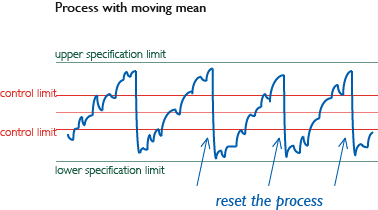
| Training courses | Consultancy | Engineering tools | The way we work |
| FMEA | |||
| Reliability | |||
| SPC | |||
| Taguchi | |||
| Tolerance design | |||
| TPM | |||
| Validation |
| Statistical Process Control
In most industries it is not realistic to allow a process to make bad parts which are then removed by inspection. Statistical Process Control is a family of techniques which are used in problem solving to improve the process and then in routine production to maintain a high level of performance. It may lack some of the glamour of more fashionable methods but has stood the test of time and can give major benefits in return for a small amount of effort. |
 |
|
Course information The concepts together with the basic skills for initial applications can be introduced in a two-day training course. To gain the greatest benefit, though, it will be necessary to add further specialised methods which are relevant for your industry. It is here that a customised training course is vital since the range of techniques is so broad : to cover them all would take more than a week. Audience Course content Expected results |
| Home |